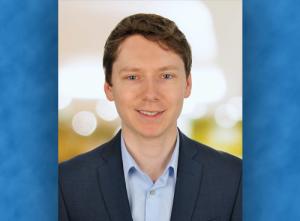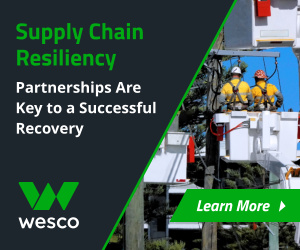Duke Energy
Lon Huber is Senior Vice President for Pricing and Customer Solutions at Duke Energy.
Energy affordability is a tough subject to grapple with but is on the minds of utility leaders and regulators everywhere as they lead the charge in the energy transition. It is a big picture subject that requires a look at all costs faced by energy and utility companies.

The issues are made even more difficult in that a utility’s customers, and those with affordability challenges, are not a homogeneous group with uniform circumstances. It’s a lot to figure out and it is a subject that requires much information and discussion.
Here, Public Utilities Fortnightly examines the issues surrounding affordability challenges with leaders in the know. You can learn much from Duke Energy Senior Vice President for Pricing and Customer Solutions Lon Huber.
PUF’s Steve Mitnick: There’s a lot going on. What do you think are a few of the most important things people should have in mind about this issue of affordability?
Lon Huber: With affordability, everybody’s definition varies. What is affordable to you? So, to me, the guiding star is about getting the best possible deal for the customer, delivering the best value.
Some metrics help guide this, like relation to the national average and percentage of income going to energy bills over time. In the service territory where I’m sitting today, Duke Energy rates are around twenty percent below the national average, and the share of household income going to the bill has fallen in general for North Carolina.
The beauty of economic development is if done right, it increases utility revenues and puts downward pressure on rates because of the increase in utility sales-billing volumes. That’s why we are focused on economic development, while also offering a series of programs for income-qualified and vulnerable customers who are facing a high energy burden.
Then the question becomes, how do you stack up long-term and short-term savings for a customer to reduce their household electricity burden to make it more manageable?
First, make sure that their home is weatherized and efficient. These are long-lasting, durable investments into their home. Then, get them involved in load-flexibility programs. This is not only an upfront credit to perhaps get a free thermostat or a discounted one, but then yearly credits for participation.
Finally, we have temporary assistance to help stabilize them. We designed an incredibly easy, administratively efficient program called Customer Assistance Program (CAP) offered in North Carolina. That is in the form of a bill credit of forty-two dollars, and we automatically enroll LIEAP-qualified customers to make sure there are no inefficiencies.
Add up all of this and get a building structure that is more comfortable, its long-term operations are cheaper, and a customer has a more manageable energy burden. The underpinning of all this is using advanced analytics to help market to the customers who can benefit the most from these types of investments.
PUF: Talk about the work Duke has been doing in that area.
Lon Huber: We developed a customer analytics platform where we can discover insights to help a customer with energy usage. We can gauge a lot by looking at load profiles, to discover inefficient HVAC systems, for example. The goal is to be proactive and get them into something more efficient.
If that has a high upfront cost, we offer an on-tariff financing program linked to their meter, not them individually, so it doesn’t follow them. If the customer moves, the repayment charge as well as the savings from the investments stays with the meter. That program is predicated on the savings being more than the financing charge.
We have other carrots. If they adopt a time-of-use rate and respond to it, there are further savings. All this requires analytics to find opportunities and communicate those opportunities to the customer in communication channels that best resonate with them.
PUF: Are there threshold tests as to who can qualify for some of these incentives? How does that work?
Lon Huber: Many of these programs are open to everybody. For others, they must be in an income-qualified program elsewhere, or they must meet certain poverty limits and so forth. It just depends on the program.
The time-of-use rate is available to everyone, as is tariff on bill, the financing, as well as bring your own thermostat. Energy efficiency, there are higher incentives for these customers, but there are still incentives for standard customers. It’s a mix.
PUF: How do you drive activity, enrollment, participation in some of these programs, which can be difficult?
Lon Huber: We do a lot of marketing, but we rely heavily on partners, trade allies, and nonprofits to get the word out, as well as partnerships with government to make sure we expand our reach. It’s a multifaceted, multi-pronged approach to make sure we’re getting the word out and the people who are seeking help get it.
PUF: In regulatory proceedings, occasionally, parties argue the utility is cross-subsidizing. Why is one class being favored? Do you hear those arguments, and how do you address them?
Lon Huber: Many of these programs are more standard and must pass strict cost-effectiveness tests. Meaning, there’s a benefit for all customers over the long run. Now, in other programs, there is a socialization component, and you must be smart and measured about how you implement that.
You must understand, what are the benefits? Sometimes people are in an unfortunate position, and need temporary assistance when they lose a job, to make ends meet. So, are there reduced arrears when they participate? This would help save costs to everyone. You must go with your eyes wide open, quantify the benefits and costs, and be tactical when deploying something like that.
PUF: Duke is in a lot of different states. Do you see differences in the programs, regulatory and political support, in dealing with affordability and income inequality?
Lon Huber: Yes, we get to see different approaches, different stakeholders. Ohio’s legislatively established low-income program is much different than the North Carolina CAP, which is a Commission-approved program I just mentioned.
For instance, What are the economic dynamics? Is it growing, is it not growing?
Are they mostly electric or are they gas and electric? There’re so many different factors at play that must be incorporated into the decision making.
PUF: What should the industry overall be aiming at over the next few years on affordability?
Lon Huber: Addressing affordability is the key. Electricity is a precondition to modern civilization, and it’s inelastic to a large degree. It’s going to be vital to the industries of the future. So how do you make sure that it’s at a price point that continues economic vitality and people are not being left behind?
There’s no silver bullet, but you’ve got to make sure you tackle the low-hanging fruit, which is energy efficiency. You’ve got to have smart programs and business model alignment to get as much energy efficiency out there, and that can include power plant efficiency too.
There must be some load flexibility. That gets into demand-response programs, so that customers can help shape their load during extreme weather events. Then add in what I said previously about load growth to help spread those billing determinants around and put downward pressure on rates.
That new load growth, you’ve got to make sure is covering its cost, any cost that it’s bringing to the system. With this new wave of economic development, we’ve got to make sure we’ve got the right tools and tariffs so that they’re additive in helping the entire utility network.
Because at the end of the day, we are an advanced network, the first modern network. You have to ask, “Does this add value or subtract value of the utility system?” We’ve got to make sure we’re doing smart things to increase that value.
PUF: Your states are facing enormous growth. When you’re talking about getting the tariffs right, hopefully they benefit all consumers.
Lon Huber: Yes, we want to make sure we have protection there for all customers too. If a large customer comes in from overseas and wants a gigawatt, and then shows up and only needs two-hundred megawatts, but we built out everything for a gigawatt, nobody wants to be left holding the bag.
First, do no harm, then it moves to beneficial arrangements. Duke Energy’s announcement with Google, Microsoft, Amazon, and Nucor, hit on that, where they’re helping accelerate and taking some of the cost pressure off of new clean energy sources. It’s do no harm, plus helping with the cost of some of these new resources.
PUF: What is the most rewarding or maybe frustrating challenge too, on this issue for you?
Lon Huber: One of my pet peeves is companies or stakeholders or advocacy groups that come in and say, “This resource of ours that we really like, and we don’t like anything else, adds a lot of value, and I want you to pay us for that value.”
They don’t understand how the system works because if that value is a hundred dollars and they want to get paid a hundred dollars, nobody else benefits from it. It’s a wash. No rates go down, nothing. You didn’t provide any value; you took all the value.
For decades and decades this is why we do the cost-plus model, or we do competitive types of structures. Cost-competitive jurisdictions do not compensate like that.
Under the current system what happens to that surplus value? Well, that surplus value just goes to making a healthy country and economy, and a reliable system that’s affordable. When you start giving all these payments out, suddenly, again, the value of the network is degrading and not benefiting the general body of customers.
Affordability conversations at fortnightly.com:



